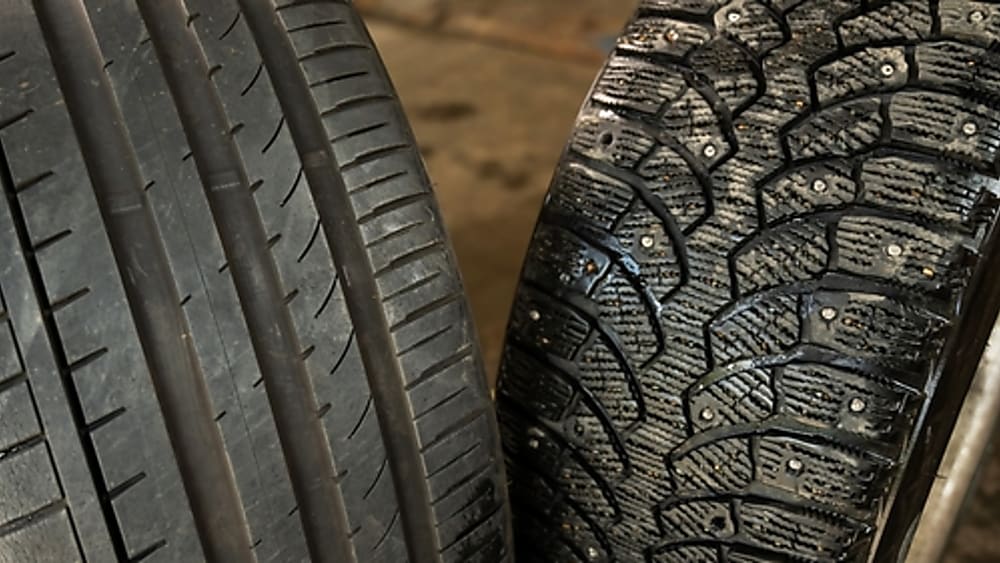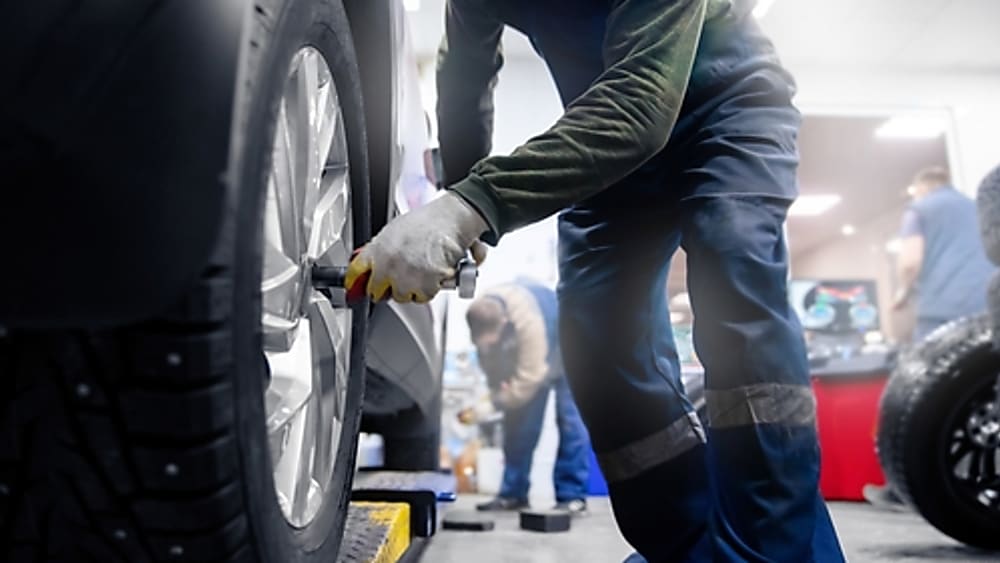Tire maintenance & safety
Winter tires: Driving in the cold? You need them!

Best price guarantee
Tire replacement coverage
24/7 roadside assistance
Easy returns
Tire maintenance & safety

Installing quality winter tires is a no-brainer for drivers in snowy climates. But dry climates may also benefit from winter tires, as they’re built for far more than just snow
Colder temperatures may have a greater effect on your tires than you realize. Even if snow or sleet isn't in the forecast, a decent set of winter tires could help you navigate cold roadways.
But do you need specialized tires? Here’s what you need to know, along with a list of a few myths about winter tires.
First, here’s a breakdown of three major types of tires.
All-season tires
Summer tires
Winter tires

Two main types of characteristics set each of the above tire categories apart from each other: chemicals and design.
Warm-weather tires are made with a chemical compound that hardens when temperatures dip below 45 degrees while winter tires are chemically engineered to remain softer and more pliable at colder temperatures. This gives winter tires an advantage when gripping cold and/or winter streets.
Winter presents some of the harshest driving conditions and most extreme weather, which affects the design. Deep tread and specialized sipes are the hallmarks of winter tires. These structural features give winter tires more ability to channel water and grip the road.
Many drivers could benefit from winter tires, but year after year, common misconceptions about winter driving and seasonal tires are shared among well-meaning drivers.
Here’s the truth about these myths:
Underinflation
Many believe that underinflating winter tires improve their performance. This is a dangerous myth that could cost you money or worse, lead to a serious accident.
Winter tires are specially designed to remain soft and pliable at low winter temperatures. This makes them better able to grip the road’s surface during extreme winter weather. In theory, underinflation would leave a winter tire softer, therefore better able to grip the street's surface and provide better traction.
There are many flaws with this practice, and underinflation causes several issues:
This is a particularly dangerous winter tire myth that can cause expensive damage and hazardous accidents.
Not every vehicle needs four winter tires
Too many drivers believe that all-wheel-drive vehicles are the only ones that require a set of four winter tires.
Rear-wheel-drive vehicles require the most traction at the rear wheels. Therefore, it may be tempting to only install two rear winter tires, but this is a risky mistake.
An imbalance in traction can cause dangerous skidding and sliding in slick winter conditions, so winter tires should always be installed in sets of four.
Winter tires are loud
There was a time when installing winter tires meant accepting excess road noise. Thankfully, that's no longer the case due to modern designs and technology.
All-wheel-drive is enough
All-wheel-drive sends power to all four wheels, not just two. This does little to improve performance in winter conditions if those wheels are fitted with tires ill-suited to the task, though. All-wheel-drive vehicles benefit from winter tires as much as any other.
Winter tires are an unnecessary expense
Quality tires can come with a premium price tag but there is a spectrum of prices for various budgets. A set of winter tires may seem like a pricey investment but consider the costs of a preventable accident. Give yourself the best shot at a safe winter driving season by installing appropriate tires for your area.

You need storage space
Storing a set of four winter tires, or, ideally, winter tires mounted on winter rims, is no small task. Consider storage with a local retailer for those who don't have the extra space for the second set of tires. Many winter tire sellers now offer out-of-season storage. Contact your local retailer for more information.
Likewise, winter tires do not need to be stacked one on top of the other. Really, you just need to follow a few simple steps and find a climate-controlled area of your house to store them.
Winter tires are just for snow
This one may be the most detrimental of all the winter tire misconceptions. Winter tires are certainly designed with snow and ice in mind, but that's not the whole story.
Cold weather conditions can significantly impact your tires and vehicle performance, as lower temperatures make it more difficult for tires to grip the road and remain at their necessary pressure. A set of traditional all-season tires might not cut it in the winter months depending on where you live.
The bottom line is, if the temperature in your area will consistently dip below 45 degrees, winter tires will serve you well. However, even the driest cold weather poses unique challenges to your tires.

Don't rely on a lack of wet conditions for your winter driving safety. Instead, make sure your vehicle is outfitted with the optimal tires for the temperatures you'll be driving in—not just for snow.
If you’re driving in the cold, winter tires are simply a good idea.
Search By